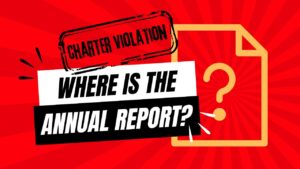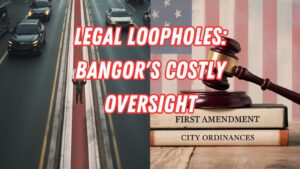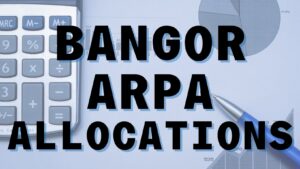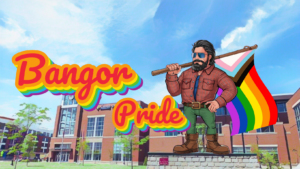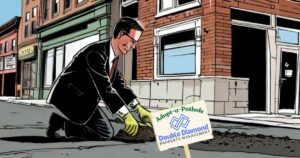
In February, I wrote about the city’s annual reports and noticed that certain sections seemed to be copied and pasted from the previous year’s report. This trend has continued with the release of the Fiscal Year 2022 report, which marks the fourth consecutive year that the same line has been included: “Many persons experiencing homelessness are difficult to shelter due to mental illness, substance use disorder, and physical health complications.”
This statement is not only recycled from previous years, but it also adds to the stigma that people who are unhoused face. It suggests that those who are experiencing homelessness are solely responsible for their situation, and that they are somehow “difficult” to help or house.
The City is perpetuating stigma against unhoused residents when in spite of its own CDBG reporting to the contrary.
Recently, the City was able to count at least 140 unsheltered individuals in Bangor. This number reflects the number of individuals sleeping outside each night when all the beds in the homeless shelter are occupied.
5-Year (2020-2024) Consolidated Plan and 2020 Annual Action Plan, CDBG Program, City of Bangor, Page 44
The city’s own reporting shows that the narrative of blaming every unhoused individual for their situation is wrong. In the FY2019-22 Annual Financial Reports, the city suggested that it is the individual’s fault they can’t be sheltered, while the city’s most recent CDBG 5-Year Plan recognized that the lack of physical capacity is a barrier.
The City has a responsibility to stop adding to the stigma faced by unhoused residents.
These contradictory reports prove that the city is aware of the complexities of homelessness, yet it continues to perpetuate the stigma that every unhoused individual is at fault. It’s time for the city of Bangor to take a more compassionate and comprehensive approach to addressing homelessness and to stop contributing to the stigma that these individuals face.
The anticipated housing never materialized…
The city’s 2015-2020 5-year plan anticipated that not a single affordable housing unit would be lost and that an additional 75 to 100 units of affordable housing would be created. However, comparing the “total number of units” chart from each of the 5-year plans shows that this never happened.

The City estimates that there will be between 75 and 100 new affordable housing units built in Bangor over the next 5 years.
2015-2020 5-Year Consolidated Plan for Bangor, Maine
The need to add and maintain affordable, quality housing has been discussed in great length and identified as a priority by community leaders and service providers.
2020-2024 5-Year Consolidated Plan for Bangor, Maine
The fact that the total number of units are the exact same 5 years later is concerning. Meanwhile, the housing crisis intensified. This is highlighted by the city’s acknowledgment of the need for affordable, quality housing as a priority in the 2020-2024 5-year plan. The city’s own reporting shows that the units anticipated in 2015 never materialized.
…or did it?
The City has over 720 affordable housing units that are managed by area non-profit organizations.
2015-2020 5-Year Consolidated Plan for Bangor, Maine
The City estimates there are approximately 1500 affordable housing units that are largely managed by
2020-2024 5-Year Consolidated Plan for Bangor, Maine
area non‐profits.
While this suggests that the number of affordable housing units in the city has more than doubled, the fact that the number of unhoused individuals has also increased raises questions. Although COVID-19 exacerbated the housing crisis, with an estimated vacancy rate of 1% in Bangor, the addition of over 700 new units in the span of five years should have made a significant difference. These contradictory reports raise concerns and suggest a need for a more thorough investigation into the city’s housing crisis.
Rent increases have significantly outpaced income growth.
| Number of Bedrooms | Rent Increase % 2015 vs 2020 |
| Efficiency (No Bedroom) | 55% |
| 1 Bedroom | 44% |
| 2 Bedrooms | 55% |
| 3 Bedrooms | 38% |
| 4 Bedrooms | 73% |
According to the city’s own reports, the fair market rent in Bangor increased significantly from 2015 to 2020. During the same period, Bangor’s median income only increased by 9.5% when adjusted for historical inflation. This helps explain why people are struggling to afford their homes, and the housing crisis is getting worse. A comprehensive strategic plan should consider this information and take action. Rental assistance should be a significant part of this plan to prevent people from becoming homeless. Additionally, monitoring this data in real-time would allow for adjustments to be made to the assistance to keep pace with the changing market.
It’s not surprising that we need more affordable housing.
However, what’s even more crucial is to take action to create more of it. To achieve this goal, we need a comprehensive strategic plan that includes a rental registry and a housing production plan. By having such a plan, Bangor can better position itself to tap into the $200,000,000 in additional funding for affordable housing that the Maine Legislature is working to create through LD 226. This way, the city can take advantage of the funding as soon as it becomes available.
ARPA gave us $20.48 million. Why is there no urgency to solve Bangor’s crises?
Why is there seemingly no urgency to address the housing crisis in Bangor? Federal money has been pouring into the city’s bank account since 2021. Do the majority of City Council not recognize the severity of the issues and its impact on the community? Is it a deliberate effort to lay the groundwork for gentrification and the displacement of low-income residents? Or is it simply a lack of leadership and political will to make the necessary changes? These questions need to be asked and answered if we want to see real change happen in Bangor.
Bangor needs to take a holistic approach to solving our crises.
To effectively address the housing crisis in Bangor, it’s important to take a comprehensive and holistic approach that considers other underlying issues such as substance use disorder, mental health, and poverty. A strategic plan that addresses all of these issues is necessary for Bangor to successfully overcome its challenges. Without a clear and comprehensive plan, our city’s crises will remain difficult to tackle. It’s time for Bangor to collaborate with all stakeholders, especially those with lived experience, to communicate and implement a strategic plan that will lead to a better future for all of its residents. The city must build that table of collaboration and send out the invites.

